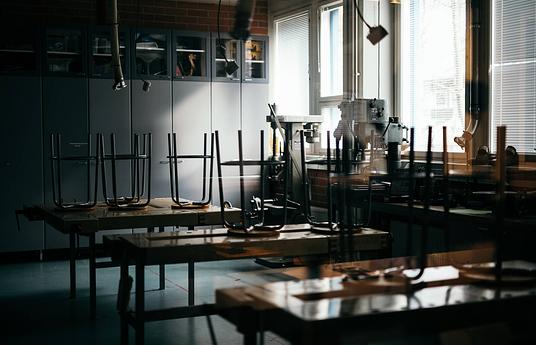What can we learn from each other? Almost every education system on earth has been affected by the coronavirus (COVID-19) crisis. As part of a joint initiative, with the OECD, The World Bank, and the Global Education Innovation Initiative from Harvard University, we have collected stories from across the globe about the solutions education systems are using to continue learning, and how they are adapting these solutions to different student and teacher needs during the crisis.
In this article, we explore Hybrid models of learning in Chinese Taipei.
Chinese Taipei has been successful in containing its number of COVID-19 cases to some of the lowest in the world. Nonetheless, they developed a series of contingency plans to ensure education would continue while also maintaining safe classrooms and schools. Non-governmental organizations played a key role in this response.
Chinese Taipei has been one of the most successful nations in the world at containing the number of COVID-19 infections. They have done this by implementing many of the precautions, strategies, and systems developed during the 2003 SARS outbreak and 2009 H1N1 swine flu pandemic. Prevention strategies were prioritized and implemented in the early stages of the coronavirus crisis at the end of December 2019.
As a result, Chinese-Taipei experienced minimal disruption to the regular operation of society and education at large. However, responding to the pandemic necessitated developing and instituting a number of policies, plans, and central authority initiatives in relation to primary and secondary education. These included, but were not limited to:
- Delaying the start of the spring semester by two weeks
- Developing class suspension plans if cases were suspected
- School entry and exit controls for teachers and students
- Planning for continuity of teaching and learning
- On-site health and safety protocols
- Producing a contingency plan for the national assessment.
Alongside central authority initiatives, a number of non-governmental organizations developed contingency plans. The focus of this education continuity story is the central authority action taken to ensure education continuity but reports on three NGO initiatives working to support students to engage with their local and built environments during the crisis are also given as examples of non-governmental engagement:
- BEEP (Build Environment Experiential Program) Lab aims to enrich and engage the minds of students and educators through the lens of architecture. BEEP uses design thinking to nurture mastery in creativity, confidence, and collaboration so as to prepare students to be responsible users and designers.
- City Wandering Challenge designs programs for teams of three students who challenge themselves to complete 30 missions within three weeks. The missions encourage students to make the city their classroom and create meaningful growth through interactions with society.
- The Co-Publishing Project inspires children from remote schools to use smartphones combined with a “photography formula”. They aim to motivate the learning of students by publishing books of stories with visuals depicting cultural elements from their local area and families.
All three of these NGOs moved to remote activities by providing physical learning kits to students’ homes, developing online alternatives to regular events, and using free local applications. They all took place in the context of widespread central authority policies to support hybrid and distance learning and to ensure the system was prepared for school building closures during the health crisis.
Main problems addressed
Ensuring safe classroom environments
From early on in the crisis, the central authority created and promoted health and safety practices and protocols, such as hand washing, social distancing, personal hygiene, avoidance of being in crowded and closed spaces, and other positive health-related behaviors. Teachers and students were required to wear a face mask in the classroom and keep a social distance of at least 1.5 meters indoors, and 1 meter outdoors. No maximum class sizes were set as long as the classroom windows were kept opened to allow airflow. Distance was also increased between desks, meal times were staggered, and teachers moved between classrooms rather than students moving between classrooms. Schools were expected to clean and disinfect school and classroom environments regularly.
Continued learning during class or school suspensions
On 20 February 2020, before the start of the spring semester, the Ministry of Education (MOE) issued a set of standards and procedures for the suspension of in-person classes in the event of confirmed cases of the novel coronavirus, in accordance with the recommendations of the Central Epidemic Command Centre (CECC) and health experts. If individual schools had two or more positive COVID-19 cases, all classes and instruction provided on that campus must be suspended for two weeks. If more than a third of educational institutions in one township, county, or city were subject to class suspension due to COVID-19, then all the K-12 schools and institutions of higher education in that township, county, or city must cease all in-person classes for two weeks. During suspension, schools and universities needed to continue teaching and learning, as well as create a plan for in-person classes to resume with the safety of the students, staff, and surrounding community members at the forefront.
Contingency planning for national assessment
As the national high school entry examination for junior high school graduates took place in April and May, the central authority worked with CECC and testing experts on developing guidelines to facilitate the implementation of this nationwide assessment. Action items included: wearing a face mask at all times during the test; checking temperatures at the entrance of the test site; no parent or guardian was allowed into testing sites; keeping all windows open 10 centimeters wide to allow airflow in each room with air-conditioning on; frequently cleaning and sanitizing all sites and rest areas; restricting exit and entry of all test sites; and monitoring the health status of those student participants who were in self-quarantine or self-isolation and ensuring their assessment rights.
Alternatives to in-person NGO programs
Despite the minimal disruption to the normal running of Chinese-Taipei's society, the COVID-19 crisis has nevertheless been described as a "roller-coaster ride" for non-government organizations in education. It became clear early on that any in-person interaction needed to be significantly modified or suspended – which made the health crisis particularly disruptive for NGO educational programs.
If you are interested in learning more about how Chinese Taipei was able to mobilize and develop resources, foster effective use of protocols, manage implementation challenges, monitor success, and how these solutions can be adapted to new contexts download the full report for free on the OECD website.
You can find more education continuity stories from the coronavirus crisis here.


